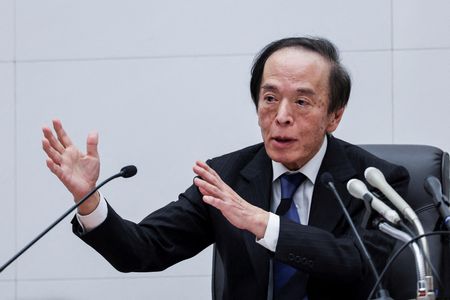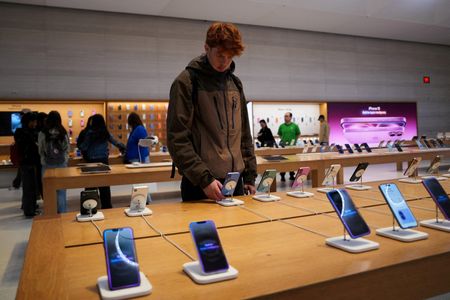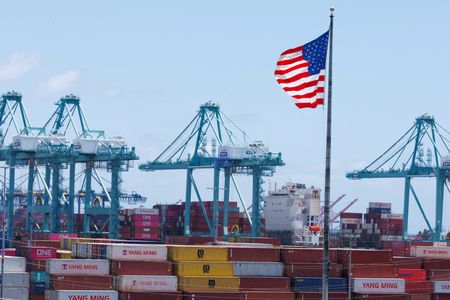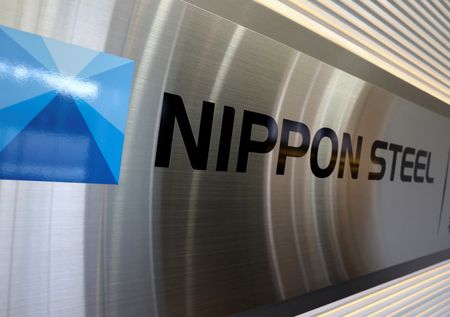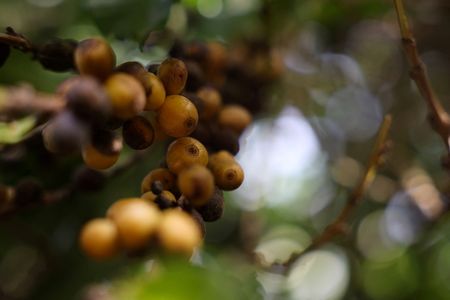By Leika Kihara
TOKYO (Reuters) -The Bank of Japan must be vigilant to the risk rising food prices could push up underlying inflation that is already near its 2% target, Governor Kazuo Ueda said, signaling the central bank’s readiness to continue its rate hikes.
The BOJ keeps interest rates low as inflation expectations, or the public’s perception on future price moves, stand between 1.5% and 2% – the highest in 30 years though still below its 2% target, Ueda said in a speech at a BOJ-hosted conference.
But a renewed rise in food prices, particularly a 90% spike in the price of rice, is pushing up not just headline but underlying inflation, which is typically influenced mostly by improvements in the economy and a tight job market, Ueda said.
“Our baseline view is that the effects of food price inflation are expected to wane,” he said.
“However, given that underlying inflation is closer to 2% than a few years ago, we need to be careful about how food price inflation will impact underlying inflation,” he added.
The remarks come as the BOJ closely monitors economic risks from higher U.S. tariffs as well as domestic inflationary pressures, in judging how soon to resume interest rate hikes.
Although the BOJ downgraded its forecasts due to trade policy uncertainties, it expects underlying inflation to gradually move toward its 2% target over the second half of its forecast horizon running through fiscal 2027, Ueda said.
“To the extent that incoming data allows us to gain more confidence in the baseline scenario, as economic activity and prices improve, we will adjust the degree of monetary easing as needed” by raising rates, he said.
SUPPLY-SIDE CHALLENGES
Japan’s core inflation hit 3.5% in April, accelerating at its fastest annual pace in more than two years due largely to a 7% surge in food costs, raising the odds of another rate hike this year.
But the central bank has signaled the need to go slow in raising rates to ensure Japan sees inflation durably hit 2% backed by robust domestic demand and steady wage hikes, rather than rising raw material costs.
Stubbornly high food prices, blamed largely on rising import costs, have complicated the BOJ’s rate decisions by simultaneously hurting consumption and keeping headline inflation well above its target.
While central banks typically look through the impact of supply shocks on inflation, that approach was criticised by academics as flawed after U.S. and European central banks were forced to hike rates aggressively after being caught off guard by a spike in inflation caused by Russia’s invasion of Ukraine.
“I think we have concentrated too much in policy instruments that (work) through the aggregate demand side,” Agustin Carstens, General Manager of the Bank for International Settlements (BIS), told the same conference.
“Now, we have to work more” in understanding supply-side factors that affect inflation, he added.
The BOJ ended a decade-long, massive stimulus programme last year and in January raised short-term interest rates to 0.5% on the view Japan was on the cusp of durably meeting its 2% inflation target.
While the central bank has signalled readiness to raise rates further, the economic repercussions from higher U.S. tariffs forced it to cut its growth forecasts and complicated decisions around the timing of the next rate increase.
A Reuters poll, taken on May 7-13, showed most economists expect the BOJ to hold rates steady through September with a small majority forecasting a hike by year-end.
(Reporting by Leika Kihara; Editing by Christopher Cushing and Sam Holmes)

